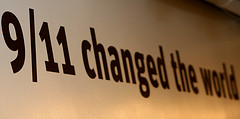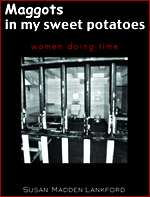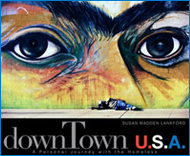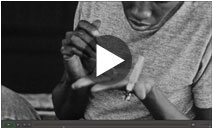 The camera eye can often throw the day-to-day world into sharp relief, making us notice things that usually slip past our conscious recognition. Photography can also be a path to rehabilitation, a means of developing skills, expressing ourselves, and creating a path of engagement with the world for those who feel deprived of one.
The camera eye can often throw the day-to-day world into sharp relief, making us notice things that usually slip past our conscious recognition. Photography can also be a path to rehabilitation, a means of developing skills, expressing ourselves, and creating a path of engagement with the world for those who feel deprived of one.
This is the stance taken by Rehabilitation Through Photography (formerly the Volunteer Service Photographers until its name change in 1982), a group that has been teaching photography as a form of therapy since 1941. What started out as simply photographing troops leaving for war and sending their photos, along with a personal note, to their families, has become much more as time went on. RTP’s website tells of the early days in the World War II era:
Volunteer Service Photographers (VSP) programs and volunteers used portable dark rooms that were designed to enable veterans to develop and print photographs from their wheel chairs and their beds. Photography speeded the healing process, easing the pain of mind and body. Herrick recognized the therapeutic potential of photography and she helped to establish additional programs that taught photography skills. VSP’s efforts became so well known that requests came from hospitals and other instituions serving the chronically ill and the emotionally disturbed.
This stance would dictate the shape of the program for the next 70 years. In the modern day, RTP engages with a large number of people at what most consider to be the fringes of society. At-risk youth is only one of the many groups that seem to be benefiting from RTP’s many efforts, as Picture Business Magazine reports:
RTP started and helps run 25 programs using photography as a unique form of therapy with 55 classes a week, 695 participants ages 8 to 80 with a total of 30,000 hours of instruction each year. Programs serve all facets of the community from the physically handicapped, developmentally disabled, at risk or economically challenged youth and nursing home residents. RTP provides photography instruction and programs to the physically and emotionally handicapped, the elderly, at-risk youth, the economically disadvantaged, the homeless and, the visually impaired.
In order to enact these programs, RTP needs equipment. If you find this to be a program worthy of support, it is currently engaged in its 2010 Summer Camera Drive. At the time of this writing, only 75 more cameras were needed by September 1, 2010, to help equip the current RTP programs. (Click on the Picture Business Magazine link for more details, below.)
What are your thoughts on the subject? Do you think that this kind of work can bring people back into a broader community? Can it provide a proper focus, allowing engagement with the world that had once seemed out of reach?
Follow Humane Exposures Publishing on Facebook.
Source: “Donate Your Cameras to Help RTP,” Picture Business Magazine, 08/04/10
Image: Rehabilitation Through Photography Logo, copyright retained, used under Fair Use: Reporting.
Visit Us on Facebook: Humane Exposures Publishing , downTownUSA, Maggots in My Sweet Potatoes, It’s More Expensive To Do Nothing

 Oprah Winfrey has a new cable network debuting next January, and that means a need for programming. In an interesting move, Winfrey has announced a new series of documentaries co-produced with some of her celebrity friends.
Oprah Winfrey has a new cable network debuting next January, and that means a need for programming. In an interesting move, Winfrey has announced a new series of documentaries co-produced with some of her celebrity friends. Incarceration is usually considered to be about punishment. Since 2006, Los Angeles County Sheriff Lee Baca has helmed a plan that adopts a variant view and is aimed at reducing criminal recidivism.
Incarceration is usually considered to be about punishment. Since 2006, Los Angeles County Sheriff Lee Baca has helmed a plan that adopts a variant view and is aimed at reducing criminal recidivism. Childhood experiences can have a lasting impact on emotions, behavior, and experiences later in life.
Childhood experiences can have a lasting impact on emotions, behavior, and experiences later in life. Questions of abuse and neglect are the tricky ones. Just like so many issues in life, they are vastly more complex than they seem at first. In the case of the children, whose bodies and brains are constantly developing, these complexities can span a broad array or disciplines.
Questions of abuse and neglect are the tricky ones. Just like so many issues in life, they are vastly more complex than they seem at first. In the case of the children, whose bodies and brains are constantly developing, these complexities can span a broad array or disciplines.








